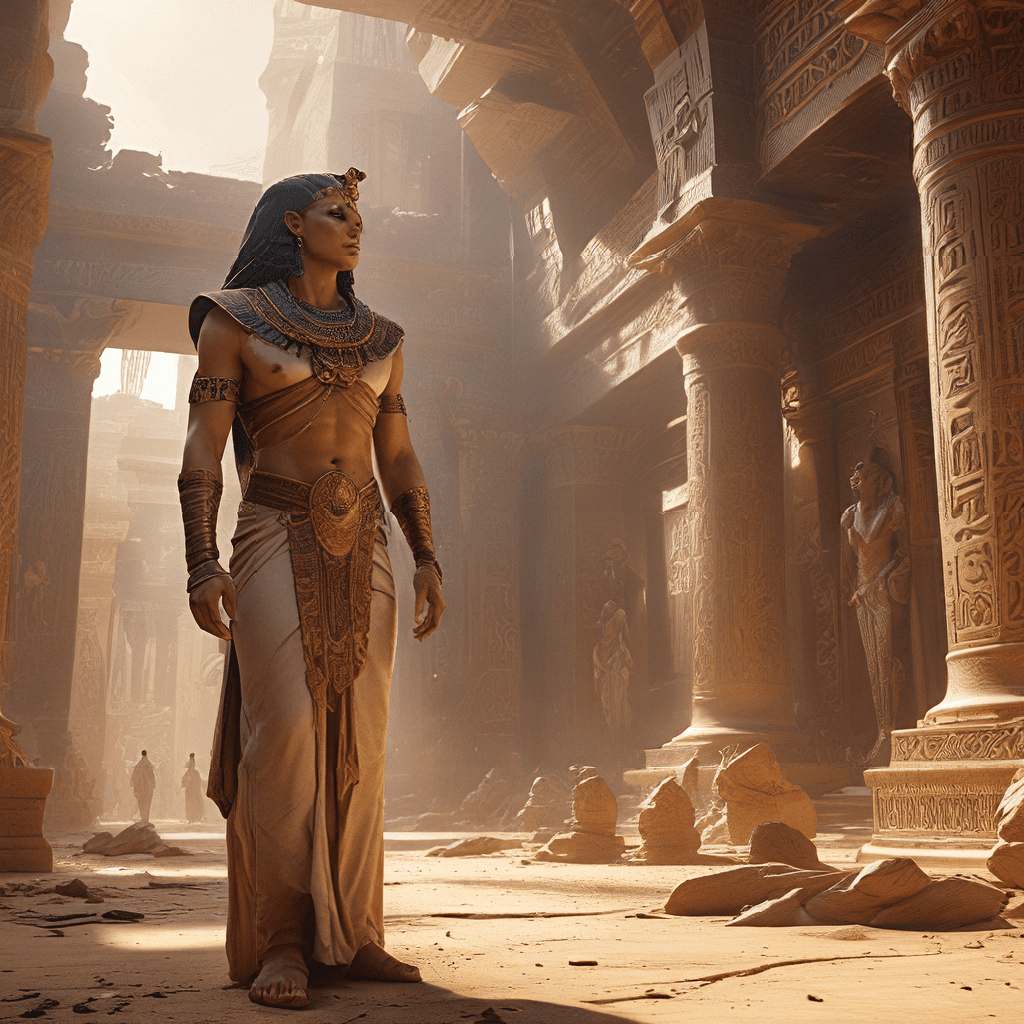The Egyptian Creation Myth: A Journey Through Time and Space
The Egyptian creation myth is a fascinating journey through time and space, offering insights into the ancient Egyptians’ understanding of the universe and their place within it. This myth, like many creation stories around the world, explores the transition from chaos to order, from nothingness to existence.
1. The Primal Waters of Nun: A Beginning in Darkness
The Egyptian creation myth begins with Nun, an infinite ocean of primordial waters. Nun represents chaos, a state of formlessness and darkness, where nothing existed. The universe was a vast, undifferentiated expanse, lacking structure and order.
This concept of Nun is important because it highlights the Egyptians’ belief in the cyclical nature of creation. Before the world, there was only Nun, and after the world’s eventual end, only Nun would remain. This cycle of creation and destruction is a recurring theme in Egyptian mythology.
2. A Divine Emergence: The Birth of Atum
From the depths of Nun, the first deity, Atum, emerged. Atum is often described as a self-created god, born from the primordial waters without a mother or father. This act of self-creation is a testament to Atum’s power and divine authority.
Atum’s emergence from Nun marks the beginning of creation. His appearance signifies the transition from chaos to order, from formlessness to form. By rising from the primordial waters, Atum brings light and structure to the universe, paving the way for the creation of the world and its inhabitants.
3. The Cosmic Egg: A Symbol of Creation
Another fascinating element of the Egyptian creation myth is the concept of the cosmic egg. This egg, often associated with Atum, represents the potential for creation. It is believed that Atum emerged from the egg, bringing forth the world and its deities.
The symbolism of the egg is universal, representing the beginning, the potential for life, and the unfolding of creation. In the context of Egyptian mythology, the egg emphasizes the idea of emergence, the birth of the universe from a single point of origin.
4. The Ennead: The First Generation of Gods
Atum, the self-created god, was not alone. He gave birth to the Ennead, the nine major deities of Heliopolis. The Ennead represents the first generation of gods, tasked with shaping and organizing the world.
These deities include:
- Atum: The creator god
- Shu: The god of air
- Tefnut: The goddess of moisture
- Geb: The god of the earth
- Nut: The goddess of the sky
- Osiris: The god of the underworld
- Isis: The goddess of magic and motherhood
- Seth: The god of chaos and storms
- Nephthys: The goddess of mourning
5. The Role of Shu and Tefnut: Air and Moisture
Shu, the god of air, and Tefnut, the goddess of moisture, represent the vital elements that shape the world. They were born from Atum, separating from him to create the space between the earth and the sky. Shu, with his breath, created the air, while Tefnut, with her tears, brought forth water.
This separation of Shu and Tefnut from Atum highlights the concept of differentiation, the emergence of individual elements from a single source. It also emphasizes the importance of the natural elements in shaping the world and its life.
6. Geb and Nut: The Earth and Sky
Geb, the god of the earth, and Nut, the goddess of the sky, are another important pair in the Egyptian creation myth. They were born from Shu and Tefnut, representing the fundamental elements of the physical world. Geb, the solid ground, and Nut, the vast expanse of the heavens, embody the balance and order that govern the universe.
The relationship between Geb and Nut is also significant. They were forbidden from having children during the day, but Nut, aided by other gods, was able to conceive her children under the cover of darkness. This myth reflects the Egyptians’ understanding of the day-night cycle and the role of the sun god Ra in illuminating the world.
7. Osiris, Isis, Seth, and Nephthys: The Next Generation
The next generation of gods, born from Geb and Nut, includes Osiris, Isis, Seth, and Nephthys. These deities are central to many Egyptian myths and rituals, playing crucial roles in the creation of humankind and the establishment of order.
Osiris, the god of the underworld, is often associated with death, resurrection, and fertility. Isis, his sister and wife, is revered for her magic, motherhood, and protection. Seth, the god of chaos and storms, represents the forces that threaten order and balance. Nephthys, the goddess of mourning, is associated with death and the afterlife.
8. The Myth of Osiris and the Afterlife
The myth of Osiris’s death and resurrection is one of the most important stories in Egyptian mythology. It recounts how Osiris, the rightful king, was murdered by his jealous brother Seth. Isis, with her magic, resurrected Osiris, but he became the ruler of the underworld.
This myth highlights the cyclical nature of life and death, emphasizing the importance of order, justice, and the afterlife. The resurrection of Osiris offers hope for the deceased, ensuring their journey to the afterlife and their eventual rebirth in the next world.
The Egyptian creation myth is a rich tapestry of stories, symbols, and deities. It reflects the ancient Egyptians’ deep understanding of the universe and their place within it. Through the creation myth, the Egyptians explored the transition from chaos to order, the cyclical nature of life and death, and the importance of balance and justice.



